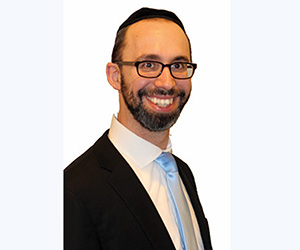
This dvar Torah is dedicated l’iluy nishmat my mother, Miriam Mirel bas Shalom, a”h, whose yahrtzeit is this Shabbos, the 13th of Adar.
Kids absolutely love waking up the day after Purim. It’s a feast in the waiting, with cookies, cakes, candies and other goodies all waiting to be sampled yet again. Grownups, on the other hand, don’t have such rose-colored glasses. It’s more like a Jewish mother’s Pesach nightmare! Yesterday was a whirlwind and today it’s all a blur. As hyper-focused as we were on Purim itself, we exit the holiday rather dizzy!
Indeed, that may be the thinking behind Parshat Zachor always preceding Purim. “These days are remembered and performed (Megilla 30a).” Zachor commands that we remember and perform the mitzvot of the day of Purim so that we may remember our nemesis, Amalek, the enemy of the Purim story. A puzzling question is how and why was Amalek (in the form of Haman) able to almost annihilate all of world Jewry, and what are we supposed to do to actively remove Amalek’s presence in the world on Purim?
The secret lies in the Megilla. The name “Megillat Esther” means to be megaleh—to reveal, the Esther—the hidden. The whole focus of the Megilla is to reveal many hidden miracles throughout the entire Purim story.
To illustrate, the Sefat Emet points out a seemingly small detail that the Megilla mentions. Mordechai would walk in the courtyard of the palace every day. Why the need for this detail of Mordechai’s daily walk? Hidden in this small line is a great merit for the saving of the Jewish nation! Mordechai refused to bow to Haman every day, which caused Haman’s hatred and loathing to build until he decided to take deadly action. Why couldn’t Mordechai just avoid Haman? Why the pressing need for him to always be in the courtyard of the palace, antagonizing this powerful arch enemy?
Meanwhile, Esther was an orphaned girl who was taken by force to marry Achashverosh. Believe me, he was not her choice as a husband. And alas, she had no hope in sight of ever leaving this lifetime state of captivity. Esther languished in this state for over four years before the miracle occurred of the hanging of Haman. Mordechai went daily to inquire about the welfare of Esther. That is why he was in the courtyard and could not avoid Haman. He was acknowledging Esther’s great sacrifice and giving her chizuk that she was not forgotten.
In this merit, Hashem saw fit to perform a miracle to save the Jewish nation. Mordechai’s act of caring was the catalyst for the miracle that saved Bnei Yisrael. Now we understand why one has to listen to every word in the Megilla—every word is crucial and filled with meaning!
Similarly, we find Haman was well known for his defamatory speech (Megilla 13b). In our case, he said there is a nation (the Jews) that is scattered and dispersed amongst the nations. Our question is obvious: What’s so terrible about the Jews being scattered? From the Persian viewpoint, wasn’t it better that the Jews could not join together to revolt?
The Sefat Emet explains that Haman was relating the reason why the Jews could now be destroyed—they were disunited. Their lack of unity gave Amalek the power to attack. As we read in Parshat Zachor, Amalek attacked the “stragglers” who were expelled from the Ananei Hakavod, the Clouds of Glory, due to their sins. These were the people who were not connected to the main group. Amalek’s source of strength was the division of klal Yisrael. That is why Mordechai proclaimed “Go and gather all the Jews”; the banding together of the Jews created the unity that protected them from Amalek!
We now have greater insight into the many seemingly unrelated mitzvot of Purim—mishloach manot, matanot l’evyonim, Purim seuda and the reading of the Megilla. The reading is to make crystal clear why we were saved and to have us copy that same behavior in our own days. We accomplish this by taking care of the destitute—matanot l’evyonim, creating and strengthening friendships through mishloach manot (sending gifts of food to each other) and by making people happy through the Purim seuda, the festive meal.
This unity of klal Yisrael, evidenced on Purim after they experienced several miracles, gave them the ability to rise above their observance of Torah out of fear and achieve a whole new dimension in Torah observance. As the Gemara Shabbos (88a) relates, the Bnei Yisrael accepted the Torah on Purim out of love.
We should keep in mind on the special day of Purim that “chayav inish l’bsumei”; our goal is to bring a sweet fragrance (i.e., joy) to others. This will give us the merit to deserve the ultimate redemption speedily in our days.
By Rabbi Baruch Bodenheim









